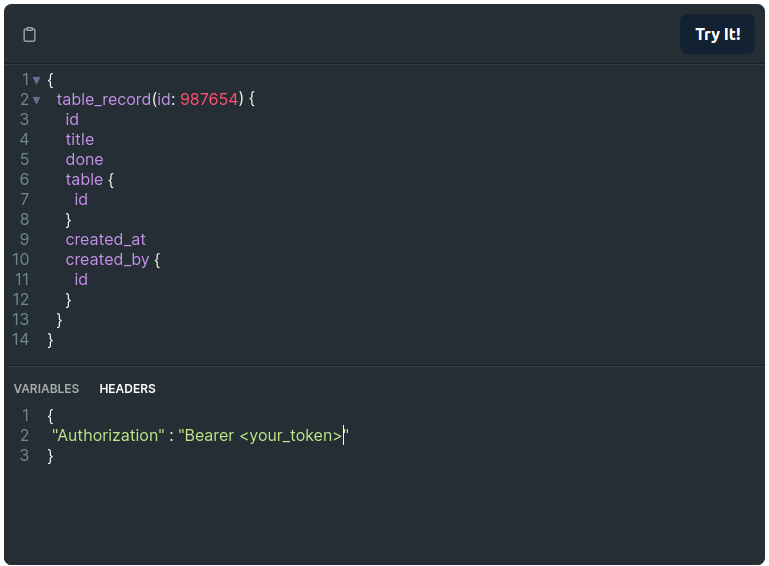Definition
In the same way that cards belongs to Pipes, Table records belongs to Tables and relates to the information stored inside Database Tables.
If you need to understand better the concept of Database Tables, please take a look at our Database Tables documentation.
Hierarchy and Relations
Accessible through:Tables
Objects tables records can access directly: Fields, Record Values
Table Records in our API
Through the GraphQL API, you can retrieve TableRecords information, interact with TableRecords and execute the actions you're able to do within Pipefy's graphical interface.
As described here, GraphQL operations always use the HTTP POST method, and you can use queries and mutations to interact with the API.
Table Records Queries
Queries are used to fetch data from Pipefy.
Here are some examples of queries to retrieve table records by its ID. You can get the record ID in the URL, if have the record opened in Pipefy UI, or list their IDs with the table_records query by table ID ( the table ID can be found using an Organization query, as shown here).
The following fields are the most used, but there are a lot more options of data you can select from TableRecords. Remember: GraphQL is a query language, so query whatever you need.
{
table_record(id: 987654) {
id
title
done
table {
id
}
created_at
created_by {
id
}
}
}
{
table_records(table_id: ID) {
edges {
node {
id
title
done
table {
id
}
created_at
created_by {
id
}
}
}
}
}
Table Records Mutations
Most of the Pipefy API functionalities allow CRUD operations. We saw before the Read operations to get TableRecords, here are the Mutations to create, update and delete TableRecords, since Mutations are used to change data in Pipefy.
If you need to update the values of its fields, you can use the setTableRecordFieldValue mutation described here.
mutation {
createTableRecord(input: {table_id: ID, title: "New record", fields_attributes: {field_id: "text", field_value: "New value for this record field"}}) {
table_record {
id
}
}
}
mutation {
updateTableRecord(input: {id: ID, title: "New title"}) {
table_record {
id
title
}
}
}
mutation {
deleteTableRecord(input: {id: ID}) {
success
}
}
Testing our API
When querying for TableRecords, there's much more information available than the ones in the examples above.
Also, keep in mind that our API has a lot of queries and mutations available not only about TableRecords.
For a full list of our GraphQL capabilities, you can access our GraphQL playground and play around with it.
API Authentication
Our API is protected, so you have to provide your access token to be able to complete the requests to our API.
You can read more about our Authentication and how to get your access token in our Authentication section.Once you have the token in hands, within our playground you'll have to add a key in the headers named "Authorization", and the value must be the name "Bearer" followed by your token, like in the image below.

Be aware that running a mutation in our playground will change the Data inside Pipefy.
